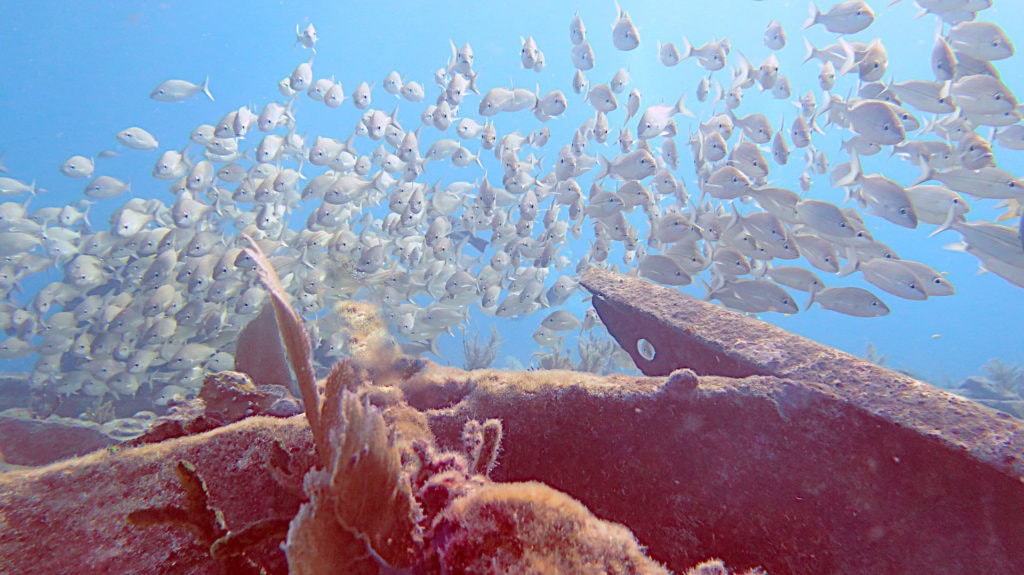Key Largo’s World Class Reefs
Dive Capital of the World – Key Largo
When you are coming to Key Largo from the North, you will come past a big sign welcoming you to the Dive Capital of the World – Key Largo! Indeed, the ocean waters off Key Largo are home to some pretty awesome reef structures and sunken shipwrecks that are part of the official Florida Keys Wreck Trek. Add a large fish population in mostly clear water, and frequent sightings of sharks, rays, eels, and turtles and you get the idea why divers and snorkelers enjoy Key Largo waters so much.

We typically dive the reefs of central and southern Key Largo and northern Tavernier. These reefs are part of the Florida Keys National Marine Sanctuary, a federally protected reef system running from south of Miami all the way down to the Dry Tortugas. The reef system is the third-largest barrier reef in the world, after the Great Barrier Reef and the Central American Barrier Reef, and it is among the precious few coral reefs in the continental United States.
World famous Molasses Reef
Our most popular Key Largo reef is Molasses Reef, which has about 30 different mooring balls to tie up your boat on and go diving. The Molasses Reef sites are known for large and architecturally interesting coral structures, swim-throughs, schools of fish, and occasional big visitors such as sharks, rays, turtles, and the like. Molasses Reef is within the approximately 25 miles long and 3 miles wide boundaries of John Pennekamp Coral Reef State Park.
Our Tavernier reefs are ledges under which countless species are hiding and above which schools of fish are swimming. Snapper Ledge and Davey Crocker are among our most popular: you are almost guaranteed shark and moray eel sightings!

While all Marine Sanctuary reefs are protected, fishing is prohibited on some of them, which often results in large, curious fish. Fish can be friendly even on those reefs where fishing is allowed because divers are required to be respectful: no taking, no touching, no harassing.
The NOAA Blue Star organization, of which Scuba-Fun is a proud member, seeks to educate divers about the Sanctuary and the importance of protecting it through good diver behavior such as buoyancy control and awareness of fin tips placement (which can do terrible damage).

Thanks to the Sanctuary’s protection and Blue Star’s educational mission, our reefs are thriving! Come see for yourself next time you visit! Whether you are a seasoned certified diver or a water enthusiast with no scuba certification, there’s a dive option available for you. Check out our scuba diving rates if you are already certified and are current in diving, our Scuba Refresher program for divers who have not gotten their gills wet in while, or our Discover Scuba Diving program for those with no scuba certification.
Recent Comments